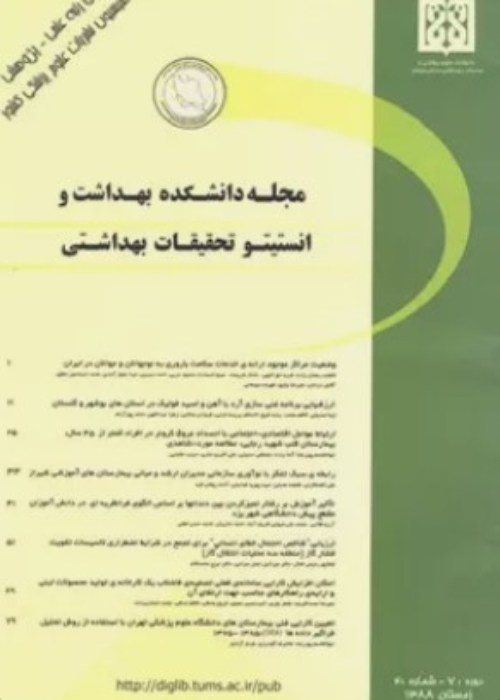Prevalence of neonatal hearing impairment in province capitals
Author(s):
Abstract:
Background And Aim
Hearing impairment is one of the most common congenital defects. Unfortunately there have been no studies so far on the prevalence of various degrees of neonatal hearing, loss in Iran. As accurate determination of prevalence is crucial in estimating disease burden and planning subsequent interventions, we carried out this study to determine the prevalence of neonatal hearing impairment. Materials And Methods
In this study, we assessed the prevalence of hearing loss among the newborns in province capitals and also looked at the role of some putative risk suggested by the Joint committee on Infant Hearing (JCIH). In this research, 76500 newborns who had undergone audiologist-administered screening tests were assessed by a special questionnaire designed specifically for this study. Results
After trapshooting the overall prevalence of hearing loss was estimated and then cases were classified as moderate (40 - 65 db HL), severe (65 - 90 db HL), or profound (>90 db HL) hearing loss. Among the newborns examined, a total of 362 were diagnosed with hearing loss and hence the overall prevalence was estimated at 4.7 per thousand; 168 cases had moderate (2.2 × 10 -3), 114 cases had severe (1.5 × 10 -3) and 80 cases had profound (1.1 × 10 -3) hearing loss.The prevalence rate ranges from 2-3 × 10 -3 (in Hamedan and Mazandaran) to 7-8 × 10 -3 (in Yazd and Chaharmahal-Bakhtiari). In newborns with a family history of sensory-neural hearing loss the prevalence was 16 × 10 -3, compared to 18 × 10 -3 in those requiring blood transfusions, 15 × 10 -3 in newborns with a history of admission to neonatal intensive care units, 17 × 10 -3 in those with craniofacial anomalies, and 19 × 10 -3 in newborns with birth weights below 1500 grams.The sample included 39376 boys and 37124 girls; 193 boys (5 × 10 -3) and 169 girls (4.6 × 10 -3) were affected. The stratified prevalence in males (193) was 477 × 10 -3 for intermediate, 311 × 10 -3 for severe and 202 × 10 -3 for profound deafness. The rates in the female population were 437 × 10 -3 for intermediate, 320 × 10 -3 for severe and 273 × 10 -3 for profound hearing loss.Conclusion
The results confirm the need for extensive neonatal screening programs, and the significant difference in prevalence between high-risk groups and the normal population provides justification for continuous audiologic screening in this group of newborns.Language:
Persian
Published:
Scientific Journal of School of Public Health and Institute of Public Health Research, Volume:5 Issue: 4, 2008
Page:
1
magiran.com/p567781
دانلود و مطالعه متن این مقاله با یکی از روشهای زیر امکان پذیر است:
اشتراک شخصی
با عضویت و پرداخت آنلاین حق اشتراک یکساله به مبلغ 1,390,000ريال میتوانید 70 عنوان مطلب دانلود کنید!
اشتراک سازمانی
به کتابخانه دانشگاه یا محل کار خود پیشنهاد کنید تا اشتراک سازمانی این پایگاه را برای دسترسی نامحدود همه کاربران به متن مطالب تهیه نمایند!
توجه!
- حق عضویت دریافتی صرف حمایت از نشریات عضو و نگهداری، تکمیل و توسعه مگیران میشود.
- پرداخت حق اشتراک و دانلود مقالات اجازه بازنشر آن در سایر رسانههای چاپی و دیجیتال را به کاربر نمیدهد.
In order to view content subscription is required
Personal subscription
Subscribe magiran.com for 70 € euros via PayPal and download 70 articles during a year.
Organization subscription
Please contact us to subscribe your university or library for unlimited access!


